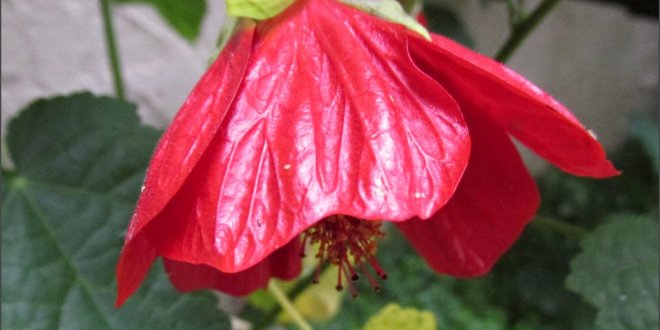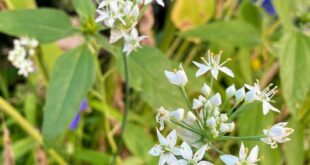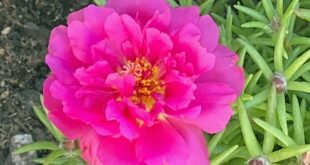Various species within the genus Abutilon, including plants commonly referred to as flowering maple, Chinese lantern, Chinese bell flower and collectively as abutilon, are evergreen shrubs enjoyed for their maple-like leaves and bell-like, pendulous flowers. Hardiness varies by species, but most survive up to U.S. Department of Agriculture plant hardiness zone 8 or 9, and some cultivars are grown as container specimens or houseplants in cooler regions. Abutilons have a tendency to become leggy and benefit form regular pruning to maintain compactness. Abutilons produce flowers on the current season’s growth, so prune in late winter or early spring.
Cleanse pruning shears, loppers or another cutting tool with rubbing alcohol or a bleach solution between uses. When pruning specimens that could be diseased, sterilize the tool between cuts to help prevent transmission.
Cut back any cold-damaged portions of the abutilon to just above a stem junction or an outward-facing node in late winter or early spring, once all danger of frost has passed and new growth has emerged. Prune off any other dead or diseased branches.
Cut back branches selectively to shape the abutilon and control growth as desired. As a general rule, remove no more than a third of the length of each stem and make all cuts just above a node. Prune out any branches that are rubbing against another branch or growing toward the inside of the shrub.
Cut back bare, scraggly or old stems to just above a strong, vigorous shoot near the plant’s base, or completely remove them with a cut at the plant’s base.
Pinch back new growth on hybrid abutilon specimens after at least six new leaves appear on the young shoot. Use your thumb and the fingernail of your index finger to remove the tip of each shoot.
Monitor the abutilon throughout the year and prune off portions of the plant that are damaged by physical injury or are heavily infested by scales, aphids or whiteflies. Whiteflies tend to congregate, especially in leaf axils and on the undersides of leaves. You may only have to pinch off a few leaves selectively to remove most of these troublesome insects. Bag or otherwise dispose of removed plant parts to prevent reinfestation.
Details
Family: Malvaceae (mal-VAY-see-ee) (Info)
Genus: Abutilon (a-BEW-tih-lon) (Info)
Species: x hybridum (hy-BRID-um) (Info)
Synonym:Abutilon globosum
Category:
Shrubs
Tropicals and Tender Perennials
Height:
18-24 in. (45-60 cm)
24-36 in. (60-90 cm)
36-48 in. (90-120 cm)
4-6 ft. (1.2-1.8 m)
6-8 ft. (1.8-2.4 m)
8-10 ft. (2.4-3 m)
10-12 ft. (3-3.6 m)
Spacing:
4-6 ft. (1.2-1.8 m)
6-8 ft. (1.8-2.4 m)
8-10 ft. (2.4-3 m)
Hardiness:
USDA Zone 10a: to -1.1 °C (30 °F)
USDA Zone 10b: to 1.7 °C (35 °F)
USDA Zone 11: above 4.5 °C (40 °F)
Sun Exposure:
Full Sun
Sun to Partial Shade
Danger:
Parts of plant are poisonous if ingested
Bloom Color:
Pale Pink
Red
Pale Yellow
White/Near White
Bloom Time:
Blooms all year
Blooms repeatedly
Foliage:
Evergreen
Velvet/Fuzzy-Textured
Other details:
This plant is suitable for growing indoors
Average Water Needs; Water regularly; do not overwater
Soil pH requirements:
5.6 to 6.0 (acidic)
6.1 to 6.5 (mildly acidic)
Patent Information:
Non-patented
Propagation Methods:
From herbaceous stem cuttings
From softwood cuttings
From seed; sow indoors before last frost
Seed Collecting:
Allow pods to dry on plant; break open to collect seeds
Read more: http://davesgarden.com/guides/pf/go/31553/#ixzz3GnDYcNiT








